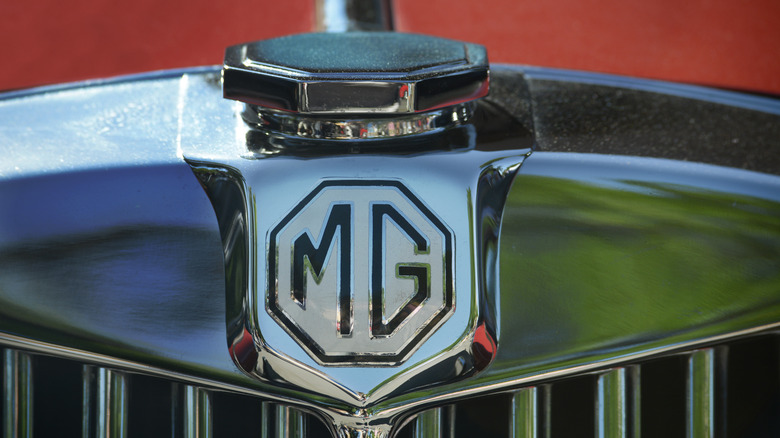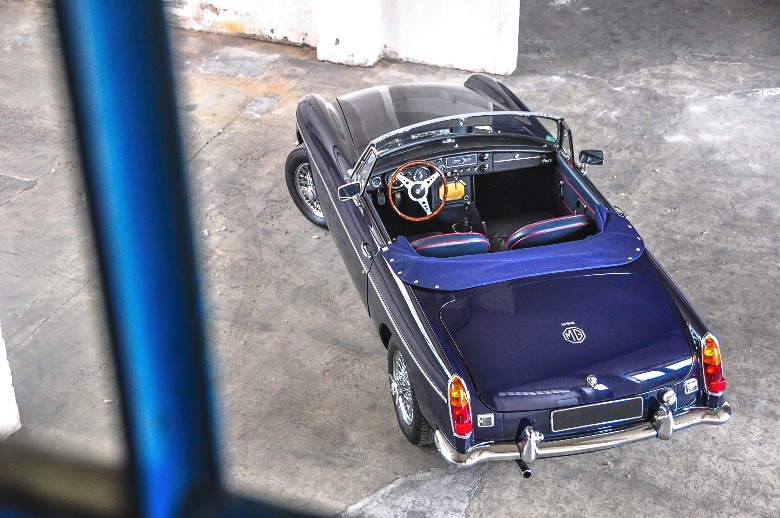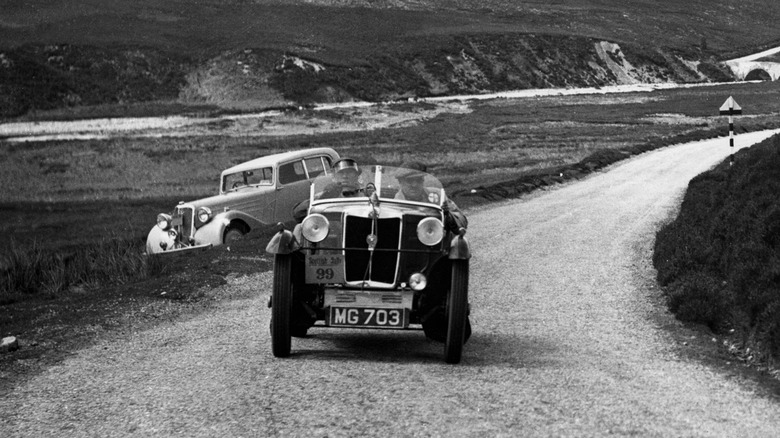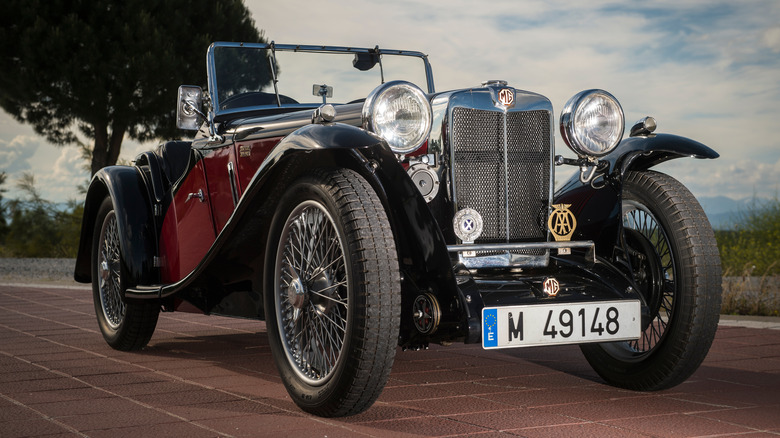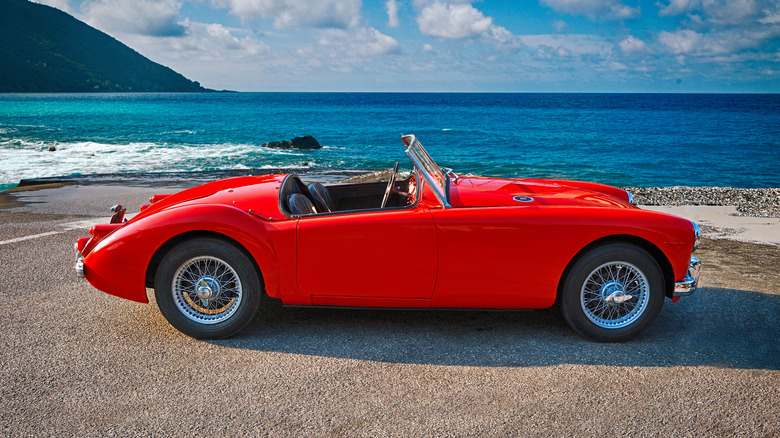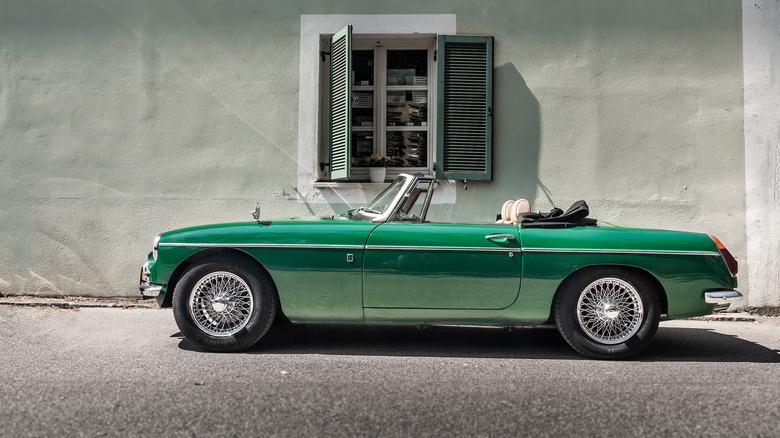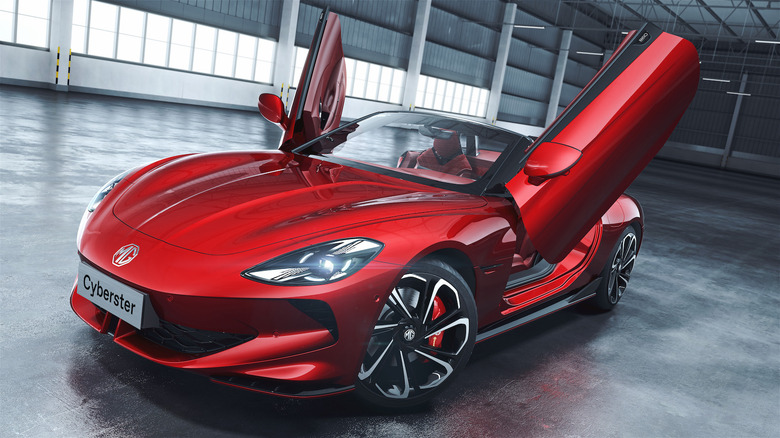5 Of The Best MG Cars Ever Made
Before establishing Morris Garages (MG) in 1924, company founder William Morris honed his craft by building and repairing bicycles in the early 1910s. But as the internal combustion engine paved the way for horseless carriages, Morris established Morris Garages to sell and service motor cars of various marquees and hired a young Cecil Kimber to manage the shop. However, Kimber had a knack for design and engineering. He soon found himself tinkering with brand-new Morris Oxfords in the garage and turning them into re-bodied Kimber Specials with MG badges.
By 1928, the MG Six, or 18/80, debuted at the London Motor Show. Although based on the Morris Six, it came with a modified and stiffer chassis and a 60-horsepower six-cylinder engine with dual carburetors and overhead camshafts. The automaker started racing in 1930 and has since been known for producing roofless two-seat sports cars and sporty sedans.
William Morris sold MG to Morris Motors in 1935 before the automaker became part of the British Motor Corporation and British Leyland in the early 1950s and 1970s. MG is now part of the Chinese auto giant SAIC (Shanghai Automobile Industry Corporation) and has a revamped lineup of cars, crossovers, and electric vehicles. Looking back at MG's glorious history, here are some of the best cars to wear the MG badge.
MG M-Type Midget (1929 to 1932)
The Austin Seven of the Austin Motor Company was lording over the sales charts and racetracks since debuting in 1923. But as the Morris Minor debuted in 1928, Cecil Kimber considered turning it from an economical, four-door car into a hardcore sports car. The MG M-Type Midget was born with a bulletproof 20-horsepower four-cylinder engine, a two-seat body, a wood frame, and an elegant boattail rear end by Carbodies of Coventry.
Experts consider the MG M-Type Midget the precursor of the sports car enthusiasts love today. It sold well after its 1928 debut (unsurprising given its affordable base price), and the 1931 variant with a modified four-speed gearbox became the first 750 cc production car to reach a 100 mph top speed. MG sold more than 3,235 units of the M-Type Midget, but less than 200 exist today. Although it sold for about £175 ($222) in 1923, a vintage M-Type Midget in mint condition would cost around $17,000.
MG TC Midget (1945 to 1949)
MG's most famous post-war vehicle has to be the TC Midget, based on the pre-war variant of the MG T-Type. However, the TC Midget has a four-inch wider body, innovative rubber engine mounts, updated suspension, and a 12-volt battery. It was also the first MG exported to the United States, giving American buyers a taste of British roofless motoring. The North American-spec TC Midget has chrome bumpers and flashing signal lights.
Under the hood is a 1.25-liter XPAG four-cylinder gas engine with a synchromesh four-speed manual gearbox. MG sold 1600 units in 1946, and the sales numbers ballooned to 3,000 in 1948. In total, MG sold 10,000 TC Midgets worldwide, a magnificent achievement despite the car being right-hand drive only. The late Duke of Edinburgh, Prince Philip, owned an MG TC Midget before marrying the future Queen Elizabeth in 1947. MG updated the car with a new chassis, independent front suspension, rack & pinion steering, and a restyled body in 1950 and called it the TD.
MG MGA 1500 (1955 to 1962)
MG made three variants of the MGA from 1955 to 1962: MGA 1500, MGA 1600, and MGA Twin Cam. MG produced 58,750 units of the MGA 1500, and it was the first MG production car to feature curvy styling and pontoon-style fender designs. The 1500 came with a 68-horsepower 1.5-liter four-cylinder gas engine and a four-speed manual gearbox, enough to reach a 98 mph top speed.
Meanwhile, the MGA 1600 marked the return of the automaker to racing, particularly the 24 Hours of Le Mans. Under the hood is a 1.588-liter inline four-cylinder engine with up to 80 horsepower. The MGA Twin Cam debuted in 1958 with an updated 1.588-liter engine featuring twin overhead camshafts and a healthy 108 horsepower. Other notable features include bigger brakes and custom wheel designs. Unfortunately, only 2,111 MGA coupes and 1,801 roadsters left the Abingdon factory between 1958 and 1959, making it among the most desirable classic MG cars ever made.
MG MGB Roadster (1962 to 1980)
MG built many variations of the MGB, but none are as iconic as the Roadster. It was the world's most popular sports car before the Mazda MX-5 Miata entered the fray in 1989, and the MGB roadster is the first car in mind when talking about the MG marquee. It has a 1.798-liter four-cylinder engine under the hood with 94 horsepower and 107 pound-feet of torque, helping it propel from zero to 60 mph in 12.1 seconds and a 108 mph top speed.
The Pininfarina-styled MGB GT arrived in 1965, but the MGB GT V8 of 1973 features a 3.528-liter V8 engine with 137 horsepower and 193 pound-feet of torque. The improved numbers allow it to reach 60 mph in 7.7 seconds and the standing quarter mile in 15.8 seconds at 125 mph. The MGB lineage ended with the LE in 1980, featuring a 95-horsepower 1.798-liter four-cylinder engine. However, the MGB Roadster remains legendary despite not having a V8 engine.
MG Cyberster (arriving 2024)
MG revealed the Cyberster electric concept at the 2021 Shanghai Auto Show, commemorating the first production EV from the automaker. It also marks the 100th anniversary of MG and celebrates a new chapter for the storied automaker. MG claims the production Cyberster EV will arrive at UK showrooms in the summer of 2024 and promises numbers to make other EV sports cars take notice.
The two-door, two-seat Cyberster will feature a fresh body style with scissor doors, a long hood, and a curvy rear end. MG has yet to divulge the juicy bits, but it did say the Cyberster could rush from zero to 60 mph in under three seconds while delivering 500 miles (800 km) of range per full charge under the European WLTP testing cycle. Other notable features include a 5G-powered gaming cockpit, a yoke steering wheel, and a digital interior. The Cyberster will not give the incoming Tesla Roadster v2.0 a run for the money, but it's one of the best-looking modern MG production cars, bar none.
